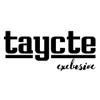Editor's note: This "A Balancing Act" story is the seventh in a series for Food Dive, where experts examine trends uncovered in earnings reports and discuss strategies that impact the balance sheet. You can read the first piece here, the second here, the third here, the fourth here, the fifth here and the sixth here.
A previous version of this story misstated how much cost savings Campbell is expected to receive. This version has been corrected.
With quarterly revenue reports plunging for many major packaged food and beverage manufacturers, executives are left scrambling to find a solution to stagnant top-line growth.
Packaged food manufacturers are seeing sales decline for a variety of categories as startups disrupt those categories with innovative and better-for-you products. Or declines occur as consumers turn away from a category en masse, such as with soda and cereal.
In turn, manufacturers have launched aggressive cost-cutting initiatives that have led to massive layoffs, factory shutdowns and the implementation of techniques like zero-based budgeting. Harvard Business Review defines zero-based budgeting as when employees must justify every expense for each new budget period based on a demonstration of needs and costs rather than using last year’s budget as an initial reference.
The question is: how sustainable is this approach? A financial limit guides just how far zero-based budgeting and other cost-cutting strategies can go. And once these companies hit their cost-cutting goals over the next few years, what's next? If they haven't determined how to turn around their top-line performance in that time, investors' appreciation of higher profit margins may not carry the company forward forever.
Why are manufacturers embracing zero-based budgeting?
The short answer is slowing top-line growth rates. Without revenue growth, manufacturers have to make cuts in costs elsewhere to retain profitability for shareholders.
“The heightened strategic bent towards zero-based budgeting likely reflects the slowing growth prospects the industry is facing,” Erin Lash, senior equity analyst of consumer packaged goods at Morningstar, Inc., told Food Dive. “Several packaged food firms have lowered their long-term top line targets from the 3%-4% range down to 1%-3% over the last several quarters.”

However, cost savings aren’t always about maintaining profitability alone, but also about what manufacturers can do with those savings to grow their businesses.
“We’ve long thought that these efforts don’t merely stand to bolster a firm’s profitability, but rather stand to provide the fuel to reinvest behind brands, including both investments in R&D as well as marketing support,” said Lash.
However, because zero-based budgeting often appears in conjunction with other cost-saving efforts, the exact nature of the impact on a company’s bottom line or reinvestment potential is not always as clear, she said.
“Several firms in the space are taking actions to rationalize their manufacturing footprint and/or drive efficiencies within their supply chain, as well as implement zero-based budgeting,” said Lash. “And as such, the financial benefits from zero-based budgeting can be masked.”
Zero-based budgeting company spotlight: Campbell
At the Consumer Analyst Group of New York conference in February 2015, Campbell detailed a new enterprise design and cost-reduction initiative that aimed to align the company’s structure with its core growth strategies, Thomas Hushen, senior manager of external communications at Campbell, told Food Dive. The company expected the new organization, which created three new divisions and implemented cost-saving strategies including zero-based budgeting to generate at least $300 million annually over a three-year period.
Thanks to those efforts, Hushen said Campbell is now ahead of that schedule and on track to deliver $300 million in annual savings by 2018. Zero-based budgeting was one of three cost-reduction techniques Campbell implemented. The other two included headcount reductions — “the bulk of which are behind us,” Hushen said — and the formation of Integrated Global Services, which Hushen described as “an organization that is a shared service group building important capabilities while lowering cost.”
In fiscal 2015, Campbell had already achieved $85 million in savings. Since officially implementing zero-based budgeting in fiscal 2016, Campbell has delivered about $130 million in incremental savings, bringing the total to date to over $200 million.

At Investor Day in July, Campbell CEO Denise Morrison told shareholders, “Combined, these efforts are creating an ownership mindset at Campbell where employees are treating every dollar as if it were their own. …This approach is allowing us to invest back in the business for long-term growth.”
CFO Anthony DiSilvestro spoke at Investor Day about strategies for transforming the way the company operated, such as expanding scope, re-engineering processes and leveraging scale. DiSilvestro also discussed what Campbell intends to do with those cost-savings: Continue adding to the business and diversifying to stay competitive.
Those reinvestments include new product launches, capability building, marketing support, the “real food” initiative, long-term innovation and geographic expansion.
Should more manufacturers adopt a zero-based budgeting strategy?
Though the food and beverage industry has seen many success stories with zero-based budgeting—from Campbell and Mondelez to Kraft Heinz and PepsiCo—that doesn’t necessarily mean all manufacturers should adopt this cost-cutting strategy.
“That is a decision that likely needs to be determined on a firm-by-firm basis,” said Lash. “From our perspective, cost-reduction efforts have not always proved beneficial.”
Lash said Kellogg is an example of how a company may successfully remove costs, but then fail to invest those savings back into manufacturing and distribution network to support growth. As a result, the company instituted several recalls because quality control had deteriorated in the absence of those costs, she said.
“However, in Kellogg’s case, we think management is more targeted in its plans this time, using a scalpel rather than a hacksaw,” Lash said.
Still, Lash warns any food or beverage manufacturer to weigh all options before launching into this type of cost reduction.
“In this vein, when you pursue a zero-based budgeting program merely focused on cost cutting, challenges could arise,” said Lash. “From our perspective, firms in the highly competitive packaged food arena will be ill-served by trying to cut their way to growth, but rather will need to fuel brand investments in order to reignite top-line gains in the longer term.”
As more success stories arise among major manufacturers, other executives could consider this approach for short-term bursts of cost savings that they can then translate into long-term growth prospects going forward.
“Continued adoption will depend on the ultimate success or failure that ensues over a longer time horizon,” said Lash.
The "A Balancing Act" series is brought to you by BMO Harris Bank, a leader in commercial banking. To learn more about their Food & Beverage expertise, visit their website here. BMO Harris Bank has no influence over Food Dive's coverage.






















